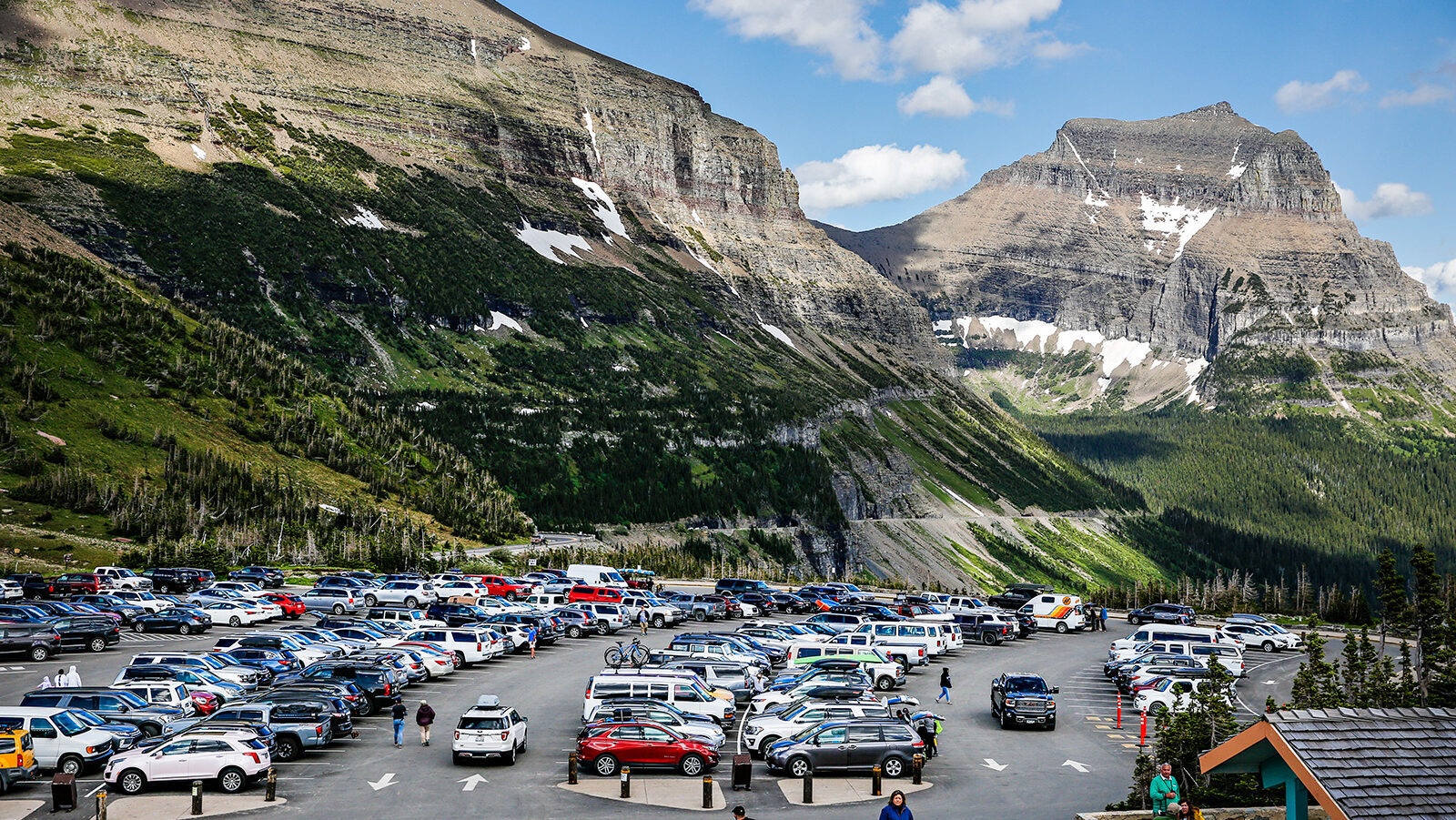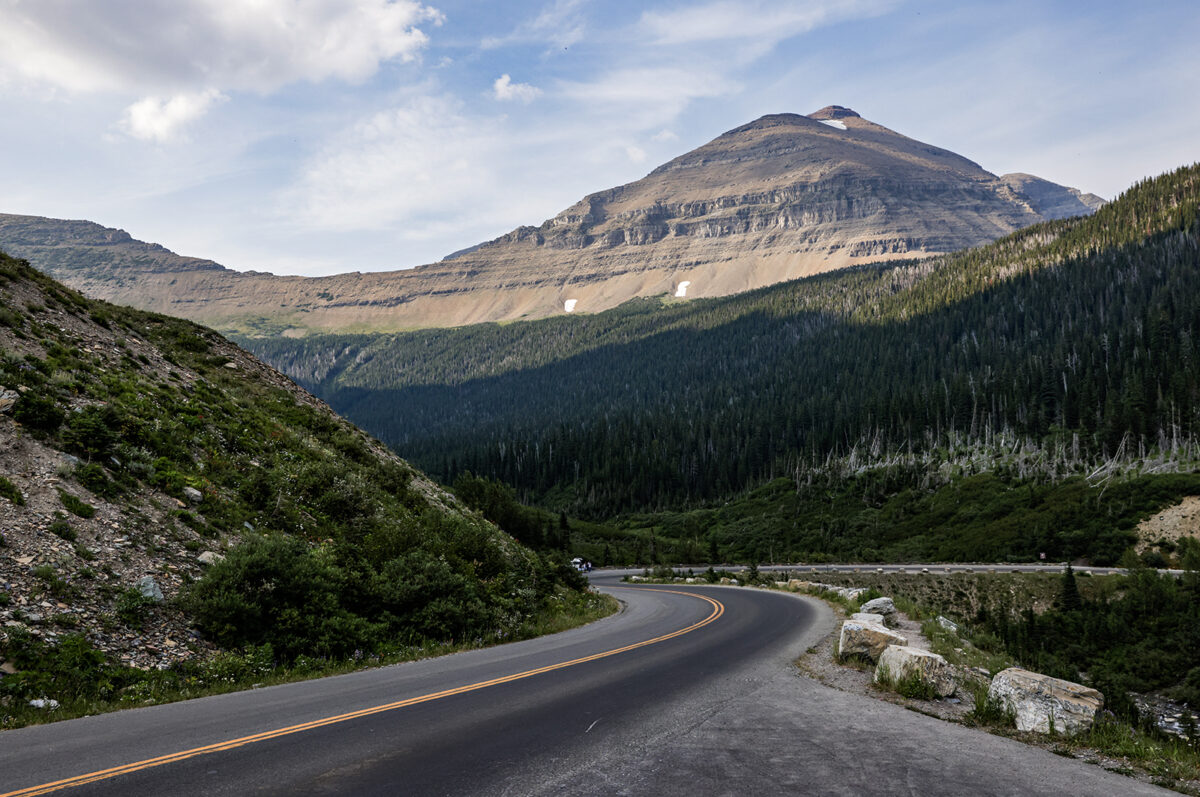
Glacier Park’s July Visitation Data Up Nearly 10% Over 2023
Year-to-date figures reveal a 6.74% increase in overall visitation to the National Park Service’s crown jewel compared to the first seven months of last year; The vehicle-reservation requirements expire at all park entrances on Sept. 8.
Glacier National Park ushered 791,717 people through its entrances in July, according to new visitation data, which revealed a nearly 10% increase in visitor traffic compared to the same month last year and marked the fifth consecutive month of year-over-year visitation growth.
In the first seven months of 2024, the park’s year-to-date visitation increased by nearly 7% over last year, with 1,651,877 people arriving at Glacier’s gates compared to 1,547,499 during the same period the year prior.
Combined with robust early-season visitation numbers for Glacier, including a record number of visitors in May, the park’s annual visitation is on pace to exceed 3 million people for the fourth time in the park’s 108-year history. However, a spate of unseasonably wet, cool and stormy weather conditions in August, for which visitation data has not yet been tallied, may have dampened the visitation trend, officials said, warning that it’s still too early to interpret the data as indicative of an overall summertime visitation bump.
For example, on Aug. 28, the upper section of the Going-to-the-Sun Road between Avalanche Creek and Jackson Glacier Overlook was temporarily closed to motorized traffic due to winter weather conditions, while emergency closures earlier in the month restricted traffic for hours-long periods.
Visitation to Glacier peaks in July and August with around 1.4 million tourists passing through the entrance gates over the two-month period.
Entrances affording visitors access to the park’s popular Going-to-the-Sun Road registered the highest traffic spikes. The Saint Mary entrance on the park’s east side saw 200,839 visitors in July, up 21.2% over last year, while the popular West Glacier entrance recorded 366,366 visitors, an 8.3% increase over 2023.
Compared to 2023, visitation was also up at the Two Medicine entrance, which saw an 8.8% jump over last year with 57,346 visitors, and at Many Glacier, where 88,475 July visitors signaled a 4.4% increase.
Glacier National Park is in the fourth consecutive year of requiring a vehicle reservation for park visitors. This year, the reservation requirement is in place for the North Fork, Many Glacier and the West Entrance of Going-to-the-Sun Road. The pilot program was engineered to shunt congestion away from the park’s most popular corridors, and its applications have varied from year to year.
For example, removing vehicle reservation requirements from the Two Medicine area has at times led to increased traffic at that entrance this summer, forcing park officials to impose temporary restrictions as parking lots reached capacity. Meanwhile, the 21.2% visitation spike at the Saint Mary entrance, where vehicle reservations were not required this summer, is likely due in part to the ease of access there.
The vehicle-reservation requirements expire at all park entrances on Sept. 8. This year, reservations were required on the west side of the Going-to-the-Sun Road and at the North Fork entrance beginning May 24, between 6 a.m. and 3 p.m. At Many Glacier, vehicle reservations were required beginning July 1, also between 6 a.m. and 3 p.m.
In a press release Thursday, park officials warned visitors that traffic congestion is likely to increase and urged them to plan for temporary delays, especially during the peak hours of the day, between 10 a.m. and 2 p.m.
“Based on observed traffic patterns during previous vehicle reservation pilot seasons, vehicular traffic is expected to increase when reservations are no longer required, and entry may be temporarily suspended due to congestion,” the release states. “Parking at Logan Pass, Apgar Village, Avalanche, and other popular areas is expected to be congested or temporarily unavailable.”

Starting on Sept. 3, shuttle service was reduced and will conclude for the season on Sept. 15. Lines for shuttles are expected to be long.
The time restrictions for bicycles on Going-to-the-Sun Road will also end on Sept. 9. During the 2024 season, bicycles were not allowed on Going-to-the-Sun Road (both directions) between 3 p.m. and 6 p.m. from Apgar to Logan Pass. This restriction will be lifted starting Sept. 9. More information on biking in the park can be found on the park’s website bicycling page.
Although vehicle reservations will no longer be required for the season, each vehicle entering the park is required to have an entrance pass for any entry point into the park. These passes could include any of the following: a $35 vehicle entrance pass purchased at time of entry and good for seven days; a valid Interagency Annual/Lifetime Pass; or a Glacier National Park Annual Pass.
Learn more about the 2024 Pilot Vehicle Reservation System by visiting Glacier National Park’s website.